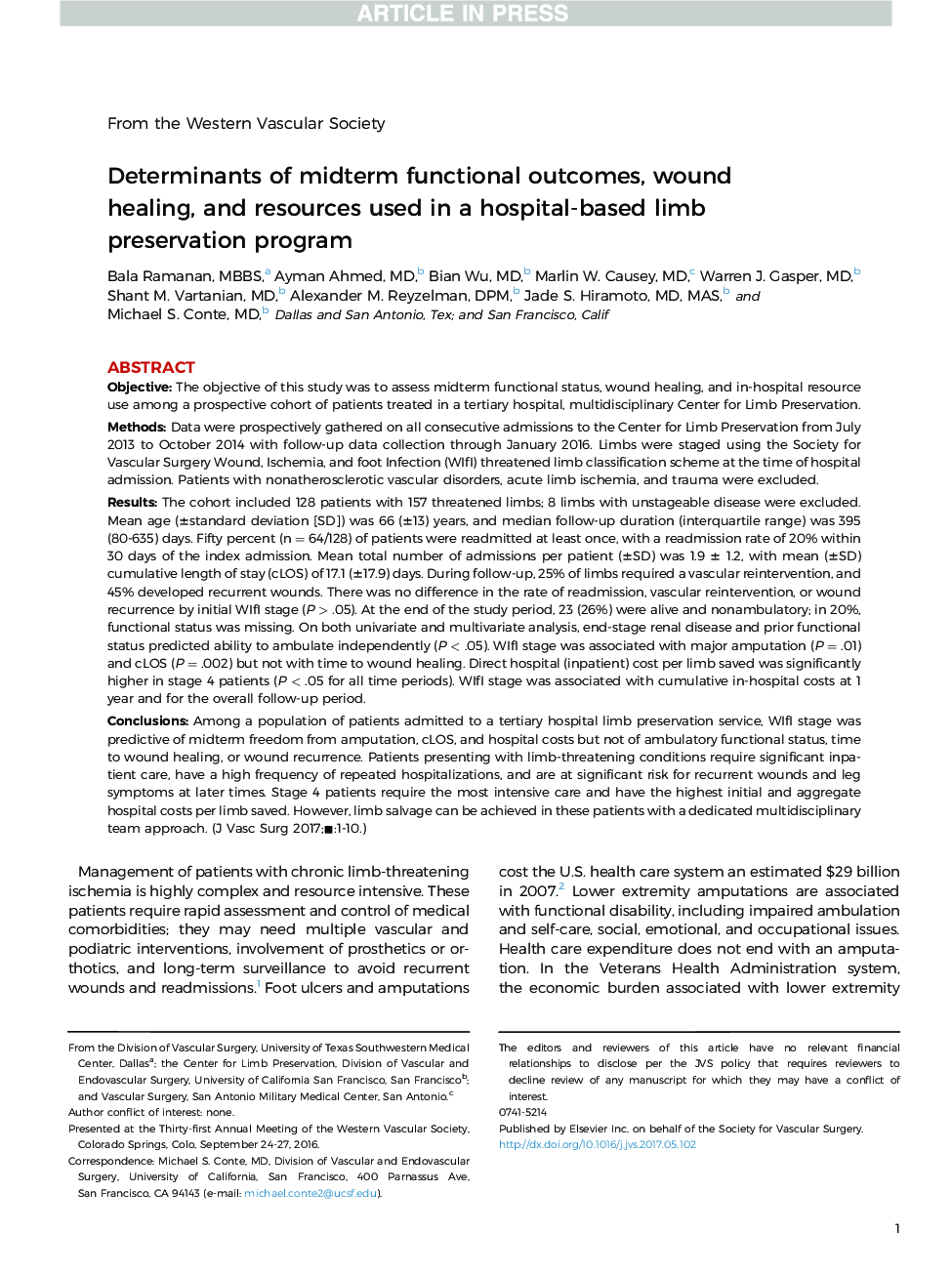| Article ID | Journal | Published Year | Pages | File Type |
|---|---|---|---|---|
| 8672203 | Journal of Vascular Surgery | 2017 | 10 Pages |
Abstract
Among a population of patients admitted to a tertiary hospital limb preservation service, WIfI stage was predictive of midterm freedom from amputation, cLOS, and hospital costs but not of ambulatory functional status, time to wound healing, or wound recurrence. Patients presenting with limb-threatening conditions require significant inpatient care, have a high frequency of repeated hospitalizations, and are at significant risk for recurrent wounds and leg symptoms at later times. Stage 4 patients require the most intensive care and have the highest initial and aggregate hospital costs per limb saved. However, limb salvage can be achieved in these patients with a dedicated multidisciplinary team approach.
Related Topics
Health Sciences
Medicine and Dentistry
Cardiology and Cardiovascular Medicine
Authors
Bala MBBS, Ayman MD, Bian MD, Marlin W. MD, Warren J. MD, Shant M. MD, Alexander M. DPM, Jade S. MD, MAS, Michael S. MD,
